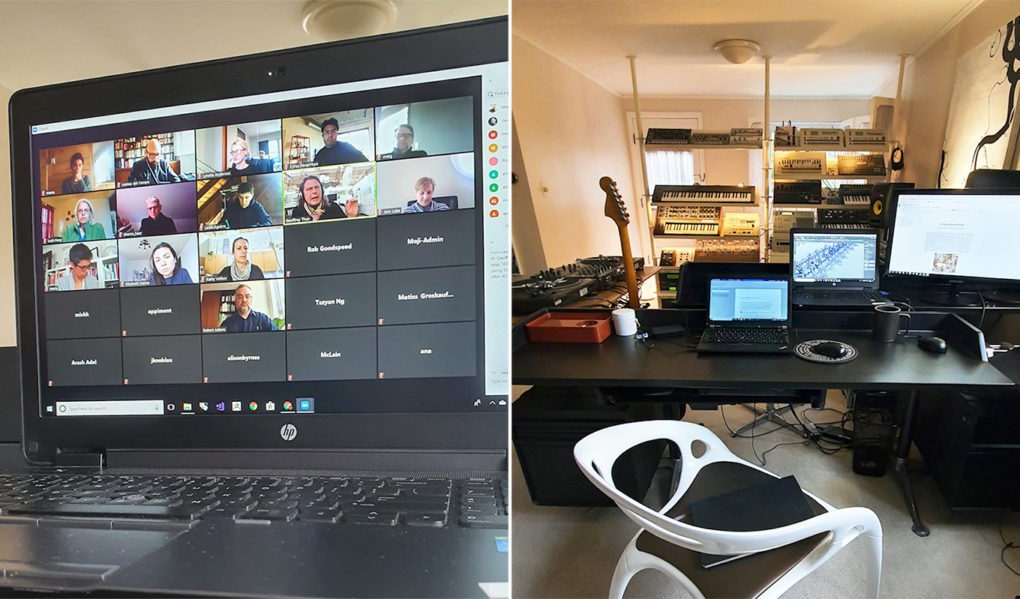Matias del Campo, an associate professor of architecture, recently published an essay in Places Journal as part of its “Field Notes on Pandemic Teaching” series, in which educators around the globe share their thoughts on the challenges of abruptly moving to online teaching during the COVID-19 pandemic. He joins numerous other Taubman College faculty who have contributed to the “Field Notes on Pandemic Teaching” series.
Del Campo’s essay is excerpted below.
“Maybe, just maybe”
The beginning of the challenge seemed understated, when on Wednesday March 11, Dean Jonathan Massey informed the faculty of Taubman College: Instruction will resume on Monday, March 16, on a remote or virtual basis.
Virtual — suddenly the term acquired new meaning and status. No longer just a mandatory trope of cyberpunk literature, or favorite toy of digital technology aficionados, the virtual was suddenly our new and ubiquitous reality. In my work as architect and educator, digital tools and the related discourse have long played a pivotal role; as a member of the university-wide XR committee, I helped plan the implementation of Virtual Reality and Augmented Reality curricular tools. But until the pandemic and the lockdown, virtual applications were used largely as tools of representation and simulation.
Now we are seeing the emergence of a digital studio culture. Now our studios consist of virtual meeting spaces that allow us to share and discuss work; online repositories to store and revisit work; and digital publication platforms. Some of my studios also use cloud computing for computationally heavy work in Artificial Intelligence applications or simulations. In combination, these tools and technologies move us beyond the traditional studio, allowing us, for instance, to circulate and interrogate projects more globally. For the upcoming final review, I’m assembling a jury with guests from the United States, Europe, China, and Australia — and the event will be streamed live for everyone to see. Thus the review — traditionally accessible only to those on campus — can become into a far-reaching and inclusive gathering.
More broadly, the current crisis is turning ideas about the digital studio that have circulated since the early ’90s (Architects in Cyberspace, anyone?) into an unprecedented, large-scale experiment in which we are testing future scenarios for architecture education. Simultaneously it serves as a profound interrogation of the traditional pedagogical model of the studio. The face-to-face debate, the serendipitous examination of other students’ projects, the apophenia and positive mis-readings, the social bonding — all these have made the traditional studio an inspiring, informative, and positive learning experience.
Maybe it’s time to form digital salons, virtual open houses that will encourage debate, sociability, conversation, celebration — that will be positive alternatives to discrete containers of education and intellectual interrogation. Maybe dozens of online Gertrude Steins will find their voices in this new normal, and maybe — just maybe — we will get used to this new method of conducting education.
— Matias del Campo
Read essays by other Taubman College faculty in the “Field Notes on Pandemic Teaching” series:
Associate Professor Andrew Herscher
Associate Professor Mireille Roddier
See the entire “Field Notes on Pandemic Teaching” series here.
Places Journal provides public scholarship on architecture, landscape, and urbanism. Learn more here.





